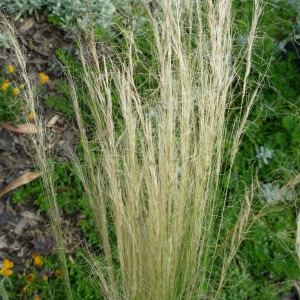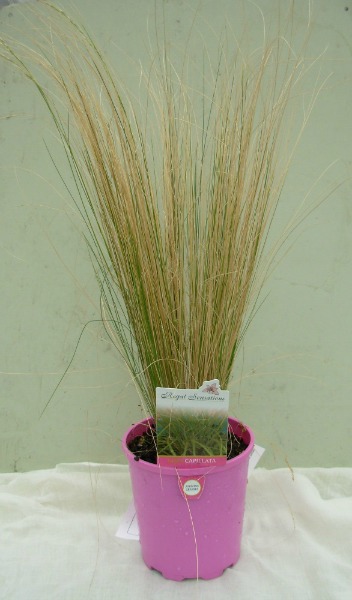Mexican feather grass

Mexican feather grass (Nassella tenuissima) is a State prohibited weed.
If you find Mexican feather grass
If you think you have seen Mexican feather grass, please contact us by:
- completing this form
- calling our Customer Service Centre on 136 186
- emailing weed.spotters@agriculture.vic.gov.au
Please do not attempt to treat or dispose of this weed yourself. We will treat, remove and dispose of Mexican feather grass safely, at no cost to the land owner.
Why you must report Mexican feather grass
Mexican feather grass is a serious weed to Australia. It is hardy, drought tolerant, unpalatable to stock and difficult to control.
It is estimated that anywhere from 14 million to several 100 million hectares of Australian land could be vulnerable to Mexican feather grass infestation. This could exceed the spread of the closely related serrated tussock, widely regarded as Australia's worst pasture weed.
If allowed to establish, the economic and environmental costs of Mexican feather grass could reach tens of millions of dollars annually.

Identifying Mexican feather grass
Mexican feather grass is a dense upright tussock that grows to about 70 cm high.
Leaves are thin and roll smoothly between the thumb and forefinger. Serrations make the leaves feel coarse when sliding fingers down the length of the leaf blade.
Mature plants form small, white seeds that grow in the top third of the tussock. Seeds have a long awn (tail 5 cm to 9 cm long) with one or more bends.
Learn more by watching the following video.
Identifying Mexican feather grass video
This is Mexican feather grass. Mexican feather grass will grow up to about 70 cm high. The leaves are very thin and roll between the fingers easily. If you take a leaf and rub it down towards the base of the plant, serrations on the leaves make them feel coarse.
When the plant is mature it will form seed heads, which are very fluffy in appearance. The individual seeds have a long tail on the end called an awn. This helps the seeds to blow in the wind and spread.
Mexican feather grass can be found growing in garden situations in reserves or even in paddocks.

Additional information
In 2008, Mexican feather grass was inadvertently sold by a number of retail chain stores throughout Victoria. Investigations have revealed that approximately 4,000 Mexican feather grass plants may have been supplied to stores from January to May 2008.
The distribution of the grass in Victoria is not known as there are still plants unaccounted for as a result of the sales in 2008.
Mexican feather grass 3D model
The New South Wales Department of Primary Industries have developed 3D (three-dimensional) models to help people become more familiar with prohibited invasive plants, including Mexican feather grass, by providing a life like representation.
The model can be manipulated and inspected at every angle and magnification and is a great way to become more familiar with Mexican feather grass.
© Regional NSW through NSW DPI Invasive Species Biosecurity. Model created by Rachel Klyve.
Explore 3D ModelLookalike species
Mexican feather grass is very similar to serrated tussock (Nassella trichotoma) but can be distinguished by the much shorter awn (tail 2.5 to 3.5cm) on serrated tussock seeds.
Other grasses that are commonly reported as Mexican feather grass include fox tails (Pennisetum spp.) because the flowers look like feathers, and the native poa (Poa spp.) as the growth habit is similar to that of a tussock.
The difference in both cases is that the leaves of these grasses are flat, not tightly rolled like Mexican feather grass.
